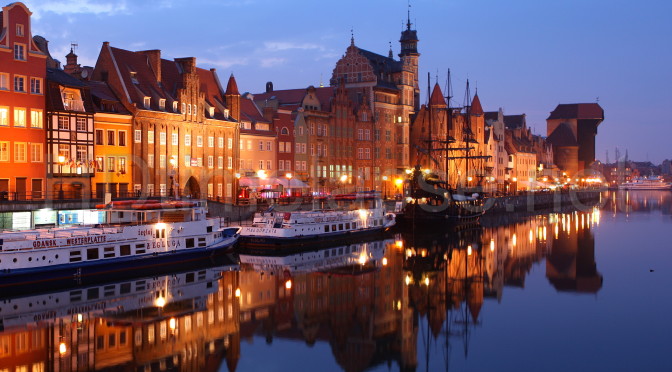What to see in Gdansk. Gdansk is a particular city, full of history and charm: from the Hanseatic League, to the birth of the Solidarity movement, advocate of the liberation of Poland from communism, in this city you can breathe freedom at every corner. The lanterns lit in the market square, among cafes, restaurants and historic buildings, also give a fairytale atmosphere. You will immediately fall in love with Gdansk!
What to see in Gdansk - what to visit in Gdansk
Gdansk is a millenary city that overlooks the Baltic Sea and for centuries has welcomed sailors, merchants and travelers from all corners of the world. It is located in northern Poland, and forms part of a conurbation ( Trójmiasto ) which includes the spa town of Sopot and the seaside resort of Gdynia . Today Gdansk is an important scientific, cultural and industrial centre, with 20 schools and universities present in the city area.
In the list of what to see in Gdansk there are certainly its historic districts, in particular the Great Town ( Główne Miasto ), the Old Town ( Stare Miasto ) and the Old Suburb ( Stare Przedmieście ). It is immediately apparent how the city's Polish identity has blended with Prussian, Russian, Estonian, Dutch and Scottish influences, thanks to the city's turbulent historical past.
What to see in Gdansk: good history of Gdansk
Declared a city in 1263, Gdansk has been part of Polish, Prussian and German kingdoms over the centuries, was a city of the Hanseatic League, a Free City and one of the largest ports on the Baltic Sea. In fact it was one of the richest cities in Europe, thanks to the flourishing maritime trade and to a good policy operated by its government.
In the 20th century Gdansk was at the center of important events: it was here, on 1 September 1939, that World War II broke out and 40 years later, during 1980, in Lenin Shipyards the social movement "Solidarność" , which in 1989 he took Poland out of the socialist rule of the Soviet Republic. Gdansk was christened the City of Freedom and was awarded the Flag of Honor by the Council of Europe in 2002 for its crucial role in the eradication of the communist regime in Poland and the rest of Eastern Europe. Also in Gdansk the division between Western and Eastern Europe was decided after the end of the Second World War.
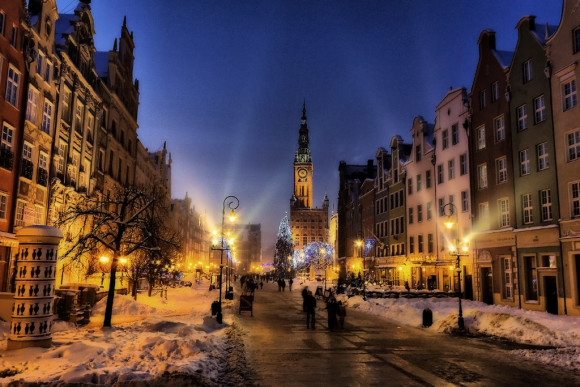
What to see in Gdansk: the Great City (Główne Miasto) and the Old City (Stare Miasto)
The Great City , in Polish "Główne Miasto" , is the historic center of Gdansk, and is grouped along the main street of Ulica Długa (or "Long Street") and the Długi Targ , the Long Market square . These are the two must-visit areas in Gdansk , easily reachable on foot from the train station. South of the Great City is the Old Suburb ( Stare Przedmieście ) where you can visit the Narodowe National Museum . The Old Town , on the other hand, is located along the Motlawa River , where the port of Gdansk was once located. Today, boat trips leave from here and the old buildings along the river house shops, restaurants and cafés.

What to see in Gdansk: the Long Street (Ulica Długa) and the Long Market Square (Długi Targ)
Ulica Długa (or "Long Street") and Długi Targ ("Long Market Square") are both part of the ancient royal route of Gdansk , i.e. the road along which Polish kings entered the city during official visits, enclosed by either side by the two imposing City Gates, the Golden Gate ( Zlota Brama ) and the Green Gate ( Brama Zielona ). This area represents the heart of the historic center of Gdansk , surrounded by buildings with fascinating architecture and whose epicenter is represented by the famous Neptune Fountain . Most of Gdansk's historic buildings are located on the Royal Route Gdansk Town Hall , the Court of Confraternity of San Giorgio and many other buildings of great cultural and aesthetic value.
Piazza del Mercato Lungo is located at the eastern end of Via Lunga: in the square there are buildings such as the Casa d'Oro and the Corte di Artù , but above all numerous cafés, restaurants, souvenir stalls and street artists.
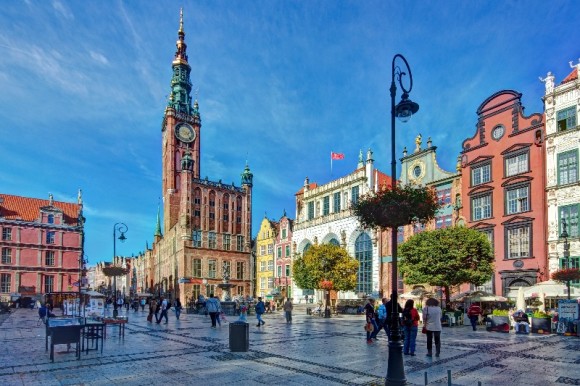
What to see in Gdansk: the Neptune Fountain
The Neptune fountain , located on the Long Market Square, is the symbol of the city of Gdansk and dates back to the first half of the seventeenth century. At the center of the fountain stands the god Neptune who represents the might and pride of the city and its sea. Today it has become a meeting point for tourists and for the inhabitants of Gdansk who meet here at all times of the day and in the evening, when the square lights up with its most evocative charm.

What to see in Gdansk: the Church of Santa Maria in Gdansk
Gdańsk St. Mary's Church ( Bazylika Mariacka : Podkramarksa 5, Gdansk) is a large red brick Gothic church and is also the largest brick building in Europe . The church was erected in 1343 and its construction lasted 160 years, it is 105 meters long and 30 high: its central nave has more than thirty chapels, and has a capacity of about 20,000 people (many were the people who took refuge in the church during 1981, when martial law was in effect). Completely destroyed during the Second World War, the Gdańsk St. Mary's Church was rebuilt after the war. Note the 15th century astronomical clock by Hans Düringer from Toruń, positioned at the highest point of a building. From the 80-metre-high church bell tower (which can be reached by climbing 400 steps) you can enjoy a panoramic view of the city of Gdansk , including its port and surroundings.
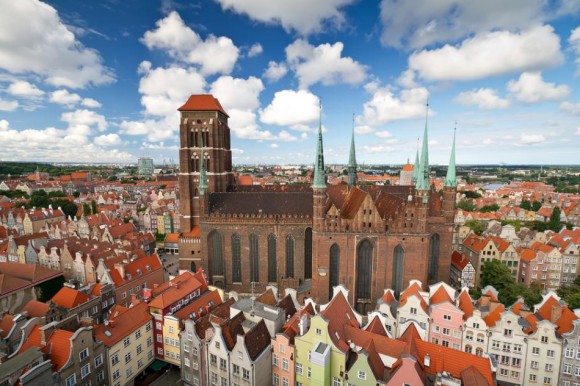
What to see in Gdansk: Ulica Mariacka
Just behind St. Mary's Church is Mariacka Street , one of the most picturesque streets in Gdańsk which still retains the former atmosphere of the thriving merchant city of the 17th century: Here the lively atmosphere is enhanced by numerous art galleries, cafes and amber jewelers . Definitely not to be missed among the things to see in Gdansk.
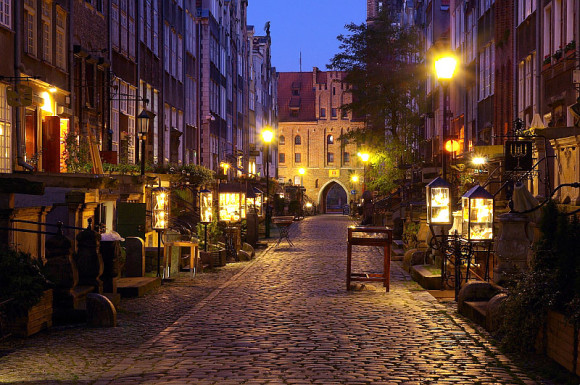
What to see in Gdansk: the Town Hall of Gdansk
The Gdańsk Town Hall (in Polish “Ratusz Głównego Miasta” : Długa 46, Gdańsk), located on the Long Street and built in the Flemish and Renaissance styles, is one of the most famous monuments in Gdańsk . The original building dates back to the 1300s, but what you can admire today is a meticulous reconstruction carried out after the war. On the top of its tower, at a height of 82 meters, stands the golden statue of Sigismund II Augustus (King of Poland from 1548 to 1572), while inside the Town Hall there is the Historical Museum of Gdansk , in which you can admire the Czerwona Council Hall , also called the Red Hall due to the color of the furniture.
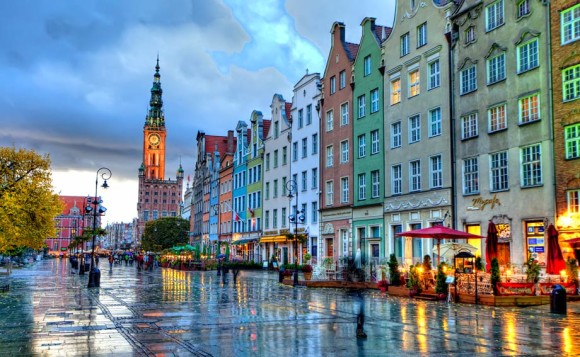
What to see in Gdansk: Arthur's Court (Dwór Artusa)
In the Long Market Square , Arthur's Court ( Dwór Artusa : Długi Targ 43-44, Gdańsk), an old 14th-century Gothic palace with remarkable architecture, dedicated to the legends of King Arthur's court, is at the time the social events of Gdańsk . The European merchant classes of the fifteenth century were attracted by the legends of King Arthur and were fascinated by his deeds. In this century various Courts of Arthur arose in Northern Europe, among which the most famous were those of Gdansk, Riga and Tallinn: they were meeting places of the bourgeois guilds of the city.
What is most striking is its Flemish-style facade, decorated with statues of Judas Maccabeus, Themistocles, Scipio Africanus and Mario Camillo. The interior of the Court of Arthur consists of a single large Gothic room, with decorated walls and a starry vault, supported by four columns, as well as an immense tiled stove, more than 10 meters high.

What to see in Gdansk: the ancient gates of Gdansk
Gdansk is embellished by the presence of numerous ancient city gates, which still retain the charm of the past. The Gothic gate of Santa Maria (“Brama Mariacka”) gives access to Mariacka street, along the path that leads to the church of Santa Maria.
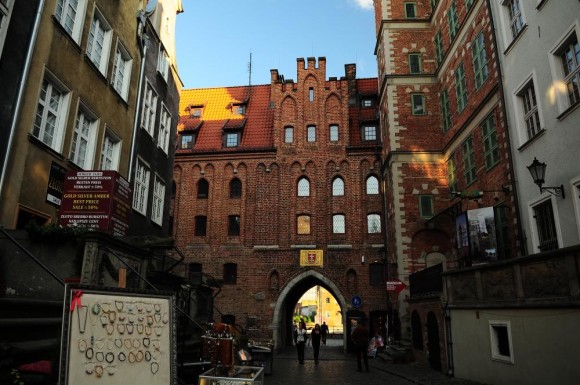
The Porta a Monte ( Brama Wyzynna ), located at the northwest end of Ulica Dluga and dating back to the 14th century, was the ancient entrance to the city. Here is the prison tower with the Gdańsk torture chamber .
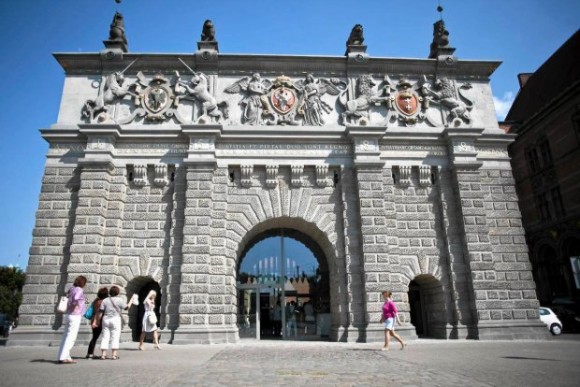
the Green Gate ( Brama Zielona ), on the other hand, faces the port and the Motława channel and the Granary Island. On the other side is the Piazza del Mercato Lungo.
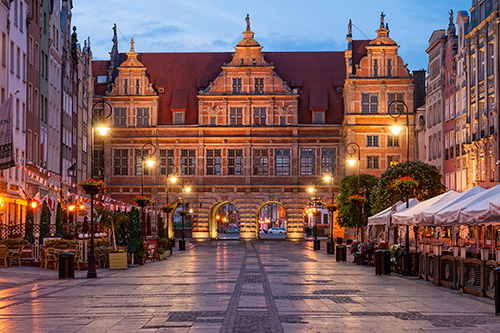
The other city gates of Gdansk are: the Bread Gate ( Brama Chlebnicka ), built by the Teutonic Knights in the 15th century, the Golden Gate ( Złota Brama ), placed next to the building of the Brotherhood of St. George, the Gate of the Holy Spirit ( Brama Sw Ducha ), located on the riverside, the Great Crane Gate ( Brama Zuraw ), the Stall Gate ( Brama Straganiarska ) and the St. John's Gate ( Brama Świętojańska ).
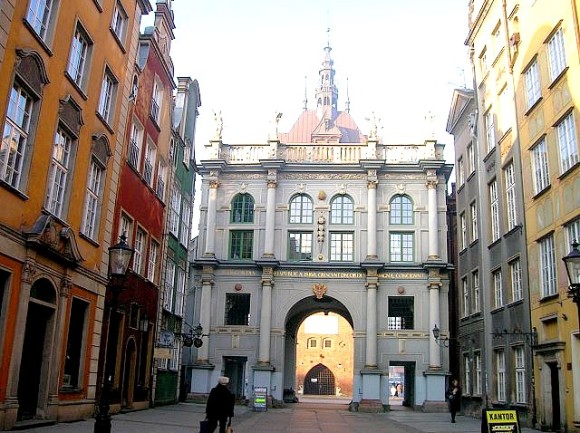
What to see in Gdansk: the Gdansk crane
The Gdańsk Crane ( Żuraw Gdański : Szeroka 67/68, Gdansk), located along the Motlawa River, is a wooden crane (the largest of medieval Europe's port cranes) built in 1444. Its function was to allow the unloading of the goods and the assembly operations of the naval masts. Its internal mechanism, which has remained intact to this day, consists of a large wooden wheel, driven by the power of the legs. Today the large wooden tower is one of Gdansk's most popular tourist attractions .
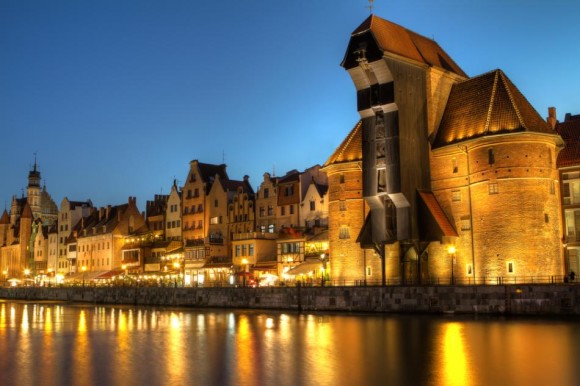
What to see in Gdansk: the Lenin yards
The Gdansk ( Stocznia Gdański : Na Ostrowiu 15/20, Gdańsk), also called Lenin's Shipyards, were the scene of anti-communist and independence struggles during the 1970s and 1980s. In the Lenin Shipyards, the Solidarność , the autonomous workers' union led by Lech Walesa , whose social struggles accelerated the collapse of the communist regime in Poland and the end of the Soviet Union. Monument to the Workers , killed during social and political protest demonstrations, is worth a visit
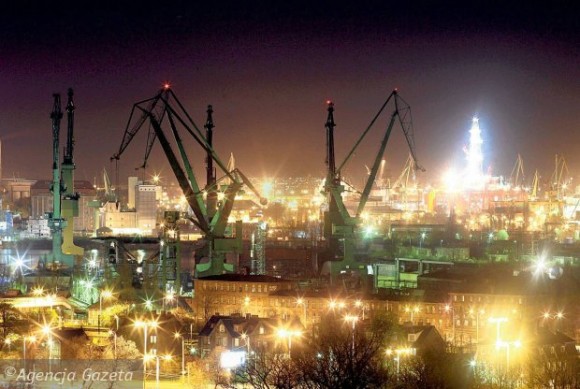
What to see in Gdansk: the Oliwa cathedral
The Oliwa Archcathedral (Biskupa Edmunda Nowickiego 5, Gdańsk), located in the Oliwa district of the same name, was built and consecrated to the Trinity, the Blessed Virgin Mary and St. Bernard. It is the largest Cistercian church in the world (19 meters wide and 107 meters long) with a characteristic facade formed by two twin bell towers, both about 18 meters high. Inside there are some Renaissance, Baroque and Rococo works.
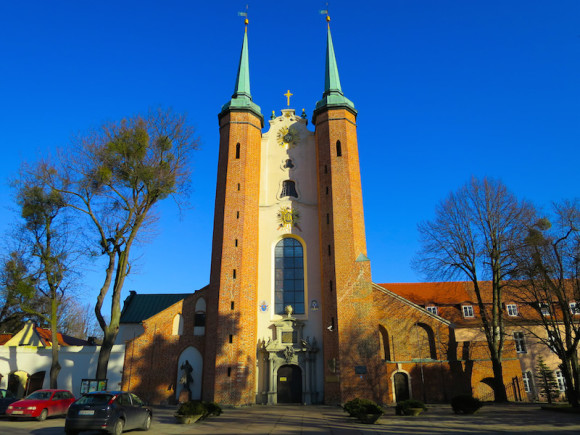
What to see in Gdansk: the central train station (Gdańsk Główny)
Gdańsk Central Station ( “Gdańsk Główny” ) is a large railway station built in red brick, in a style that blends Renaissance, Baroque and Art Nouveau. The station was inaugurated on October 30, 1900 and inside there are shops, bars and newsagents.
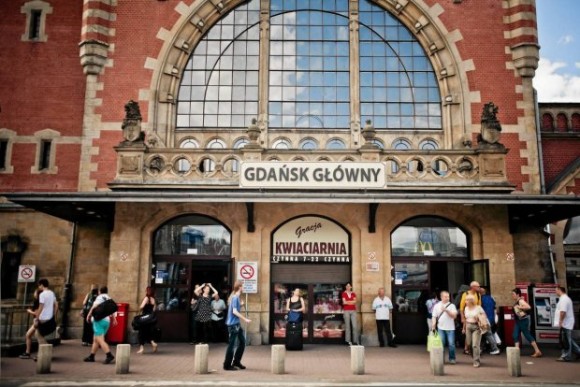
What to see in Gdansk: the Gdansk stadium (PGE Arena)
The Gdansk PGE Arena (Pokolen Lechii Gdansk 1, Gdansk) is a stadium built in 2011, on the occasion of the 2012 European Football Championships : the Gdansk Arena has a height of 45 meters and a length of 236 meters, with an overall capacity of 40,000 spectators. Located in the Letnica , it is the home of Gdansk's football club, Lechia Gdansk , and has been described as the most beautiful stadium in Europe and one of the most modern in the world.
The shape and colors of the stadium (its facade is made up of over 18,000 plates) resemble a gigantic amber crystal, a traditional Gdansk material mined along the Baltic coast, and some elements inside the PGE Arena resemble the cranes of Lenin shipyards. The Gdansk stadium is a real complex that includes a hotel and a skating ring. During Euro 2012 , the PGE Arena hosted three group stage matches and one quarter-final.
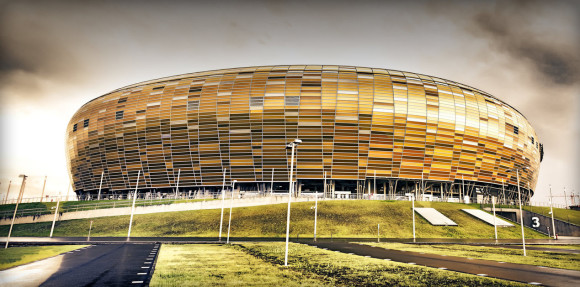
What to see in Gdansk: the museums of Gdansk
National Museum ( Muzeum Narodowe w Gdańsku : Ulica Toruńska 1, Gdansk).
Central Maritime Museum ( Narodowe Muzeum Morskie : Ulica Szeroka 67, Gdansk).
The Central Maritime Museum in Gdansk tells the story of man through boats, from ancient to modern history. The Maritime Museum contains artifacts, models and reconstructions that trace the maritime history of the city, from the first navigators to the present day. The cumulative ticket costs 18 zlotys (about €4) and allows you to visit the museum itself, the warship moored next to it, the Gdansk Crane and two trips on the ferry that connects the museum with the mainland (however reachable on foot ). Worth a visit is the Soldek , a warship moored outside the Maritime Museum, which can be explored from top to bottom!
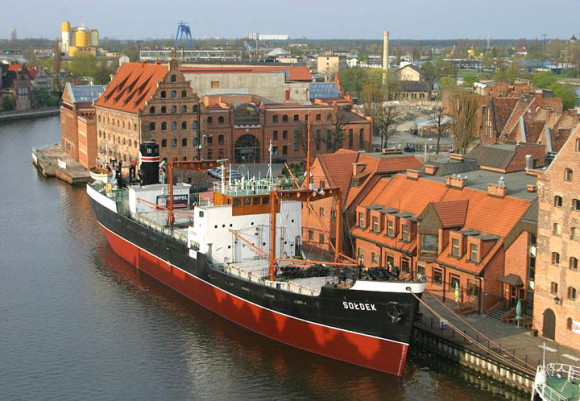
Gdańsk City History Museum ( Muzeum Historyczne Miasta Gdańska : Town Hall – Ulica Długa 46/47, Gdansk).
Amber Museum (Targ Węglowy 26, Gdansk).
Located in the tower of the ancient city wall, the Amber Museum displays interesting amber works and amber samples inside which some insects and even a small reptile are trapped. The ticket costs 5-10zl and can be combined with a visit to the Prison Tower .
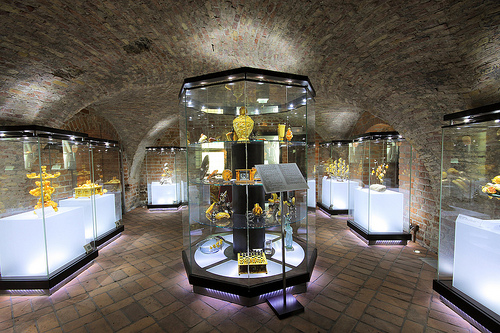
Polish Post Office Museum ( Muzeum Poczty Polskiej w Gdańsku : Plac Obrońców Poczty Polskiej 1/2, Gdansk).
This is a very small museum and most of the descriptions are in Polish. However, the Polish Post Museum tells the story of postmen who tried to defend their city from the Nazis in 1939, a very important episode for the Polish people. During the Battle of the Westerplatte, employees of the Gdańsk Post Office barricaded themselves in the building armed only with pistols. The Germans, after a shootout, collapsed a part of the building and managed to break inside. But the Polish postmen barricaded in the basement refused to surrender, so the German soldiers doused the basement with petrol, setting it on fire: no one was saved, the few survivors who surrendered were later shot.
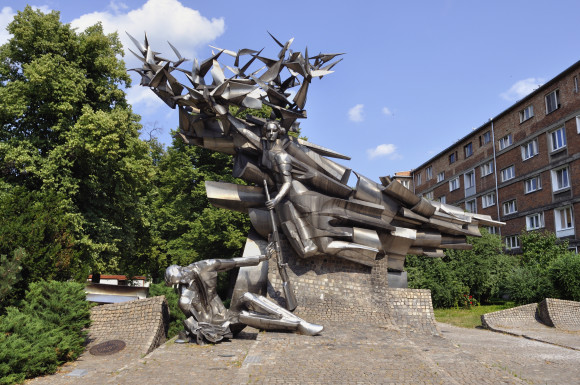
Westerplatte Open Air Museum (Westerplatte, Gdansk).
The Westerplatte Open Air Museum is a permanent exhibition that traces the history of the battle of the Westerplatte that took place here during the Second World War: the ruins scattered throughout the area and the war memorial recall the heroic act of the 200 Polish soldiers who died here in September 1939, trying to defend the city of Danzig from the Nazi army. The exhibition is curated by the Second World War Museum in Gdańsk .
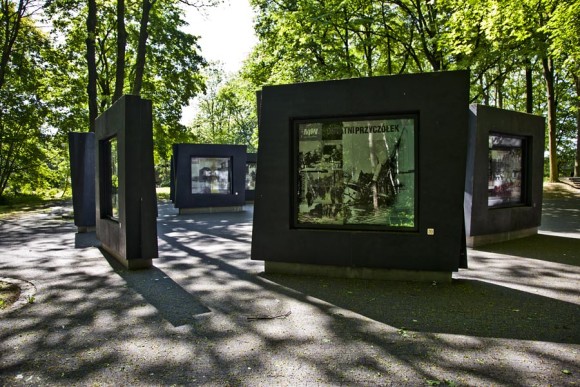
What to see in Gdansk: the crooked house of Sopot (Krzywy Domek)
The Crooked House of Sopot (in Polish "Krzywy Domek" : Boatherow Monte Cassino, Sopot), also called "the drunken house" , is a building with a bizarre architecture located in Sopot , a few kilometers from Gdansk . The Krzywy Domek houses the Rezydent shopping center (opened in 2004), with offices, shops, restaurants, amusement arcades, discos and medical offices, and is a very popular shopping destination for locals and tourists. Interesting how, inside, the furniture adapts to the curves and walls that seem to dance and sway around the visitor. Worth a visit.
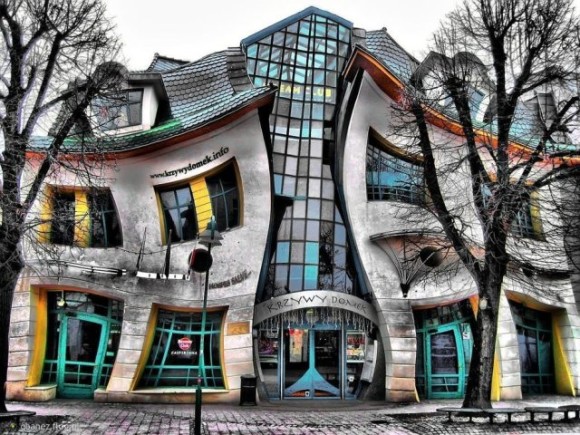
What to see in Gdansk: Malbork castle
The Teutonic Marlbork Castle (Starościńska 1, Malbork), located about 60 km from Gdańsk, is the largest brick castle in the world and is on the UNESCO World Heritage List . The castle was built in the 14th century by the Teutonic Knights , an order of Christian crusaders who fled to Europe after a series of military defeats in the Holy Land. A Polish duke offered him this strip of land, hoping to exploit the knights to subdue Prussia: however, the power of the Teutonic Knights soon grew to compete with the Polish kings for control of trade on the Baltic Sea. In 1410, the Poles and Lithuanians joined forces and defeated the Knights at the Battle of Tannenberg . Marlbork Castle is still excellently preserved today, in memory of the ancient Teutonic power in Europe.
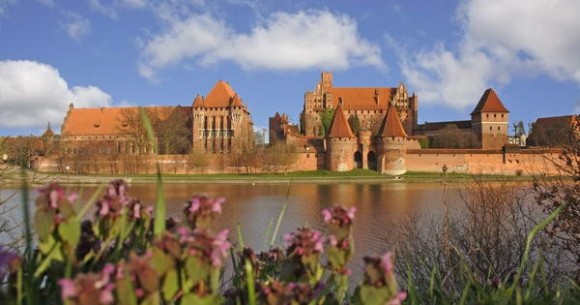
Entertainment in Gdansk: Escape games
Escape games are a perfect form of entertainment for all ages, for families, friends or companies. Gdansk, Gdynia and Sopot are home to creative talents, full of brilliant ideas. In these games you have to use your detective skills to be able to get out of the room in given time, enjoying an exhilarating action-movie experience.
Escaperooms ![]()
(Centrum Rekreacyjno – Sportowe, ul. Pokoleń Lechii Gdańsk 1, Gdańsk) Escaperooms is the first live escape game in Poland. Have you ever played an internet escape game? Have you seen the movie Saw? Well that's right, except you don't have to cut off your leg! What you have to do is get out of a locked room in 60 minutes. There are a lot of hidden objects, codes, hints that could help your escape. The game is only for teams of 2 to a maximum of 5 people. Don't worry: if you get stuck during the game, a guide will help you by giving you some clues. There are 4 game rooms.
Room of Plenty ![]()
(Stolarska 6A/7, Gdańsk) Open daily from 10.00 to 22.00.
Find out what happened to Mr. Plenty by following the clues in his room.
Let Me Out ![]() (Spichrzowa 28, Gdansk)
(Spichrzowa 28, Gdansk)
1 Way Out ![]()
(ul. Za Murami 19a – Parter, Gdańsk) Open daily from 11.00 to 1.00.
Here you not only fight against yourself and against the clock but also against the opposing team!
Enigmat Escape ![]()
(Słowackiego 1a, Gdańsk) Open daily from 10.00 to 22.00.
In Enigmat Escape you have to escape from a closed room in 60 minutes. It is played in groups of 2 to 5 people. The clock on the screen indicates the time left for you to escape, during which you will have to solve some puzzles, demonstrate the ability to think logically, connect the found clues, codes and other mysterious elements to each other.
No Escape ![]()
(Politechniczna 3/4, Gdańsk) Open daily from 10.00 to 22.00.
You only have 60 minutes to escape the room you are trapped in. Over time, the tension builds. An inconspicuous building, located next to the Technical University of Gdansk, hides a sea of riddles, figures and meticulously prepared codes.
